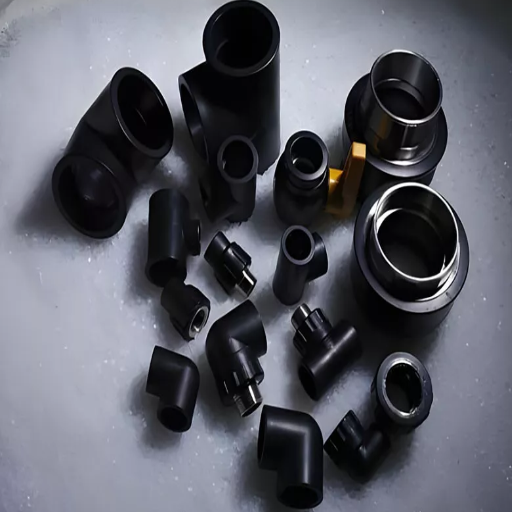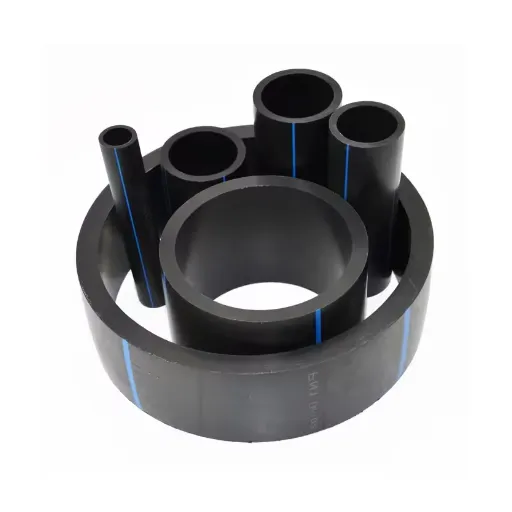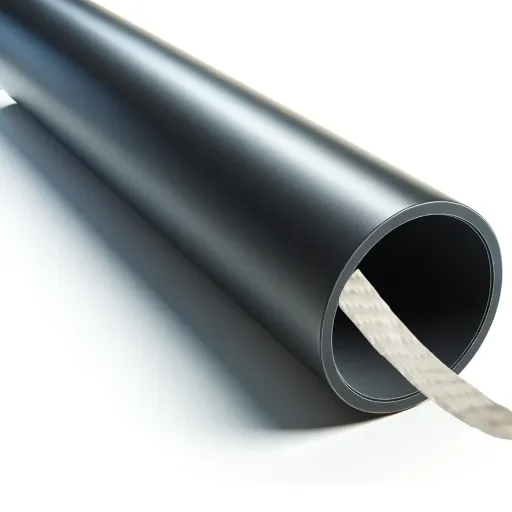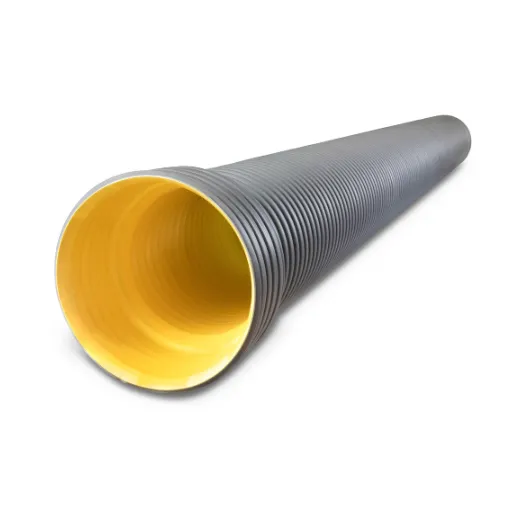High-density polyethylene (HDPE) pipes have become an industry standard in various applications due to their high durability, corrosion resistance, and flexibility. Despite their widespread usage, the process of joining HDPE pipes remains a critical aspect that requires precision and a clear understanding of connection techniques to ensure reliability and performance. This article provides a comprehensive framework for mastering HDPE pipe connection methods, addressing the fundamentals, tools, and best practices involved. By the end, readers will gain in-depth knowledge of the various techniques, such as butt fusion, electrofusion, and mechanical joining, alongside practical tips to achieve secure and long-lasting pipe connections. Whether you are an industry professional or new to HDPE applications, this guide aims to be a definitive resource for optimizing your pipe installation processes.
What is an HDPE pipe, and why is it popular?

Understanding high-density polyethylene materials
HDPE, or high-density polyethylene, is a thermoplastic polymer produced from petroleum. It has a remarkably high density of approximately 0.93 to 0.97 g/cm³, which enables it to completely outperform in many conditions and make HDPE strong and rigid yet still keep that flexibility. With its low degree of branching, HDPE is extremely claw resistant, allowing it to perform remarkably in multiple situations with different environments.
The popularity of HDPE pipes comes from the immense amount of wear and chemical damage they can withstand while still functioning flawlessly in both above and buried-ground applications. This material has great amounts of durability, being estimated to last anywhere from 50 to 100 years under normal operational conditions. HDPE pipes operate in an extreme range of temperatures, from -40° F to 140° F, while sustaining internal pressures that exceed 160 psi depending on pipe size and wall thickness. These pipes also meet PE 4710 specifications, making them even more useful in water distribution systems.
Also, its low weight allows for easier movement and set up, decreasing relevant expenses. The ability of HDPE pipes to withstand UV light and its Friction Coefficient, which is around 0.009, make the material useful in many industries, including gas and water distribution. These benefits offer insights into the widespread use of HDPE in many industries that need durable and dependable piping systems.
Advantages of using HDPE piping systems
Choosing HDPE piping systems has great benefits, all of which are backed by technology. The most important factor first. Thanks to the corrosion, chemical attack, and abradability-resistant nature of HDPE, pipes made out of this material are durable. When compared to steel or PVC, these pipes outlast the competition due to their extended lifespan. HDPE pipes also exhibit heightened flexibility. They can endure ground shifts, pressure changes, and temperature fluctuations without cracking, making HDPE suitable for demanding installations.
HDPE pipes also have impressive features from a technical standpoint. With a Friction Coefficient of about 0.009, energy losses are minimal while transport of fluids is maximized. The light weight nature of HDPE makes ease of transport and installation possible, reducing labor and equipment costs. For example, studies suggest piping systems made with HDPE can estimate up to 25% of expenses per installation when compared to traditional installations.
Above all else, HDPE is favorable for the environment. Recyclable nature and lowered impact posed on the environment through piping projects gives this material a sustainable badge. Due to this combination of ecologically constructive features and performance metrics, adoption of HDPE across various industries like water distribution, gas transport, and industrial processing is justified.
How do you properly join HDPE pipes?
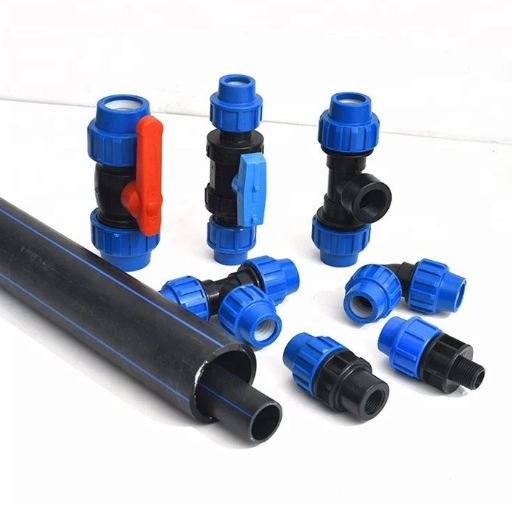
Methods for connecting HDPE pipes: A comprehensive overview
There is more than one method for joining HDPE (High-Density Polyethylene) pipes, and each method is chosen due to the application needs, working conditions, and other technical factors.
- Butt Fusion Welding: This is the most common method of joining HDPE pipes. A butt fusion machine is used to heat the ends of two pipes and press them together to make a weld joint.
- Electrofusion: This method uses electrofusion fittings that have electrical heating elements. These elements melt and weld the pipe to the fitting when they are connected to an electrofusion control unit (ECU).
- Socket Fusion: A socket fusion tool is used to heat a fitting’s and a pipe’s outside walls. Then the pipe and fitting are cooled after being joined.
- Mechanical Jointing: Welding might not be a possibility in some applications; therefore, mechanical connectors like compression fittings, couplings, and flanges are used instead. The seal elements and pressure are used in securing the joints.
Regardless of the method to be used, operating pressures, environmental conditions, and the ease of installation should be considered first. Optimal performance and durability of the joint are achieved by following the manufacturer’s recommendations and industry standards. Superior joint performance is achieved through proper training and ensured maintenance of equipment.
Step-by-step guide to fusion welding
HDPE pipes can be joined using different methods, however, fusion welding is one of the most reliable due to it being leak proof and long lasting.
- Preparation of Pipe Ends: Make certain that the pipe ends are cleansed of any contaminants such as dirt, grease, and moisture. A mechanical facer can be used to cut the ends as straight and smooth as possible so that they are properly aligned. This avoids weak joints and enhances weld integrity.
- Alignment: The pipe ends need to be put into the fusion machine clamps. For the pipes to be properly aligned, there should not be any angular misalignment, as this could cause a problem with the joint. Tools may be used to check for proper alignment.
- Heating: A heating plate that has been calibrated to a specific temperature should be placed in between the pipe ends. Prior to putting the heating plate, it has to be preheated to 200 degrees Celsius to 230 degrees Celsius depending on the grade of the HDPE used, to guarantee fusion. Pipes should be heated until the melt bead is uniform on both sides.
- Joining the Pipes: After achieving the necessary bead size, carefully lift the heating plate while preserving the alignment. Immediately apply steady pressure to the melted pipe ends. This pressure must be maintained to ensure complete fusion across the joint interface.
- Cooling: Maintain the position of the pipes while the joint is cooling to solidify the bond. Cooling times differ with pipe diameter and wall thickness; however, smaller sizes require at least 10-15 minutes, and larger pipes may take several hours.
- Inspection and Testing: Once cooled, visually inspect the weld bead to ensure it has no inconsistencies, irregularities and check that it is formed properly. Additionally, non-destructive methods such as ultrasonic or pressure testing can be done for further verification of the joint’s structural integrity. If any discrepancies arise which do not adhere to the specified standards, re-fusion will be required.
These steps and factors fused guarantee reliable and stable connections through the bond created with fusion welding for HDPE piping systems subjected to demanding applications.
Using electrofusion for a secure connection
Electrofusion is accurate and reliable in achieving strong joints in HDPE piping systems for applications that require long-term dependability. This method makes use of specific type of fittings with embedded resistance wires which are connected to the source of electricity, which cause them to supply heat. The electric current flowing through the assembly generates enough heat to melt both the HDPE fitting and the pipe surface, and upon cooling and solidification, the materials form a homogeneous bond.
- Voltage and Current: Current value must be ensured to be uniform for complete and consistent heating. However, depending on the specifications set forth by the manufacturer for that specific fitting, the voltage usually falls between 40 and 50 volts.
- Heating Time: Proper fusion is achieved when both the pipe and the fitting reach a temperature above the melting point, therefore the fitting manufacturer’s instructions on the duration of current application must be properly adhered to – which often ranges from 40 to 240 seconds.
- Cooling Time: The joint is allowed to reach the designated temperature before fitting discussed earlier, oftentimes 5 to 30 minutes, but should not be subjected to any external forces or stresses until the specified cooling period from the manufacturer is fully adhered to to achieve the full strength.
- Preparation: To achieve the best results, the top layers of the pipe and fitting must be scrubbed clean using alcohol-based wipes. In the case where joints or bonds are expected to be formed, then the roughened contours created need to be unblemished and devoid of moisture and every cleaning contaminant, along with being free from any forms of contamination.
- Alignment and Clamping: Pipes alongside fittings have to be properly aligned and evenly secured while undergoing fusion to eliminate the risks of misalignment or any fusion defects like gaps in the weld.
Following these factors while using qualified staff guarantees that the electrofusion connection is reliable, permanent, and highly leak-proof for harsh applications like water transmission, gas distribution, and even industrial systems.
What are the different fitting options for HDPE pipes?
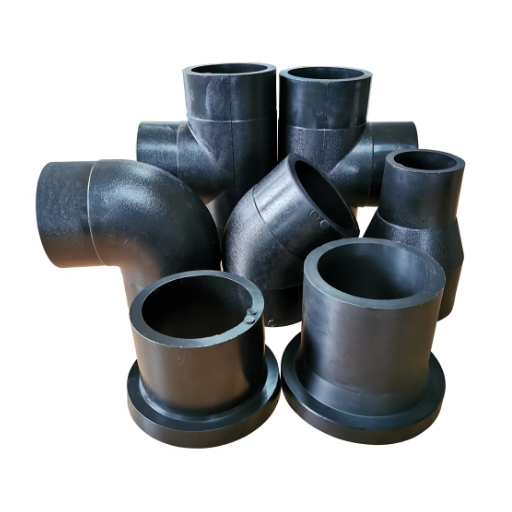
An introduction to compression fittings
Compression fittings offer an effective and easy method for joining HDPE pipes without requiring any form of welding or heat application, making it simpler in terms of installation. This type of fitting does not need specialized equipment, and is more versatile than fusion methods. Furthermore, it allows for easy disassembly and assembly of the pipe connections. This comes in handy in circumstances where welding proves to be difficult.
- Pipe Diameter Compatibility: These fittings have specific designs tailored to particular pipe measurements. In the case of HDPE pipes, these measurements range from 16mm to 160mm.
- Operating Pressure: As is the case with most fittings, compression ones tend to have their defined maximum working pressure. This value can reach higher than 16 bar, but is usually capped at that when dealing with material grade and application requirements.
- Temperature Resistance: 90% of the existing compression fittings limit themselves to no lower than 0 degrees or no higher than 40 degrees Celsius. High-performance counterparts are available, however, with the ability to operate in more extreme temperatures.
- Torque Tightening: The nut is to be tightened alongside the fitting and pipe to the degree stated by the manufacturer to avoid compromising the seal.
Following the technical requirementscomplimented with proper maintenance ensures reliable usability of the fittings in irrigation, temporary pipelines, as well as aqueduct systems for amplifying the level of ease and efficiency in construction.
The role of flange connections in pipe systems
Flange connections are important in pipe systems as they connect pipes and valves or other equipment with high precision while allowing for quick disassembly during servicing. They seal flanges by bolts, gaskets, and skilled machining of the surfaces to be in contact. They are used on piping systems with high pressure and high temperatures; flanges are capable of withstanding high stress and severe conditions of operation.
- Pressure Rating: Like any other part of the system, the flange should also match the pressure rating of the system which is usually identified as ANSI Class 150, 300, 600 etc. For safe and reliable withstanding of operational pressures, the flange needs to be in line with the other components of the system.
- Material: Such elements posses the required properties of stainless steel, carbon steel, or alloy steel which are directly proportionate to the chemical thermal and mechanical requirements of the system.
- Gasket Selection: Components of the gasket, which include spiral wound gaskets or rubber gaskets, need to be compatible with the medium being transported and resist the variances in temperature and pressure.
- Bolt Torque Specification: There shouldn’t be an overload on the bolts compromising the seal, which makes the correct torque application critical to guarantee uniform compression of the gasket.
- Surface Finish: The level of clamp contact surface roughness (Ra) guarantees proper positioning of the gasket to prevent leakage and aids in achieving a defined bearing without warp.
Flange connections maintain the structural strength and flexibility needed by complex piping systems. These components serve different purposes in various industries, critical for balancing performance and safety in pipeline infrastructures.
Exploring various coupling techniques
While the design of coupling techniques is being undertaken, it is important to consider their mechanical reliability, their alignment possibilities, and the specific operating condition. Couplings serve the purpose of joining two rotating shafts so that the rotational movement that produces torque can be transmitted. At the same time, it has to allow some axial, radial, or angular offset, misalignment, and dampen vibrations. Different techniques include rigid couplings, flexible couplings, and specialty couplings, with each having its own set of advantages.
- Rigid Couplings: These couplings are best suited and most beneficial for tasks or applications that need precise alignment done and no motion to take place. Shaft misalignment isn’t compensated for with this rigid coupling, but absolute torque transmission is provided.
- Flexible Couplings: Flexible couplings work efficiently for systems withstanding thermal expansion and dynamic forces. They account for all bits of angular, axial, and radial offsets and dislocation along with vibration-dampening flexibility.
- Specialty Couplings: These kinds of couplings include diaphragm and gear couplings, which are common accessories of high-speed or high-load machines. Those advanced applications are best suited with torque capability, speed rating, and fatigue life, which determines how long it holds under pressure.
With performance factors such as collative, environmental, and operational, alongside examining all the techniques, the design can be made better, ensuring all requirements and specifications of the systems are met, including the safety margin.
What tools are essential for fusion and installation?
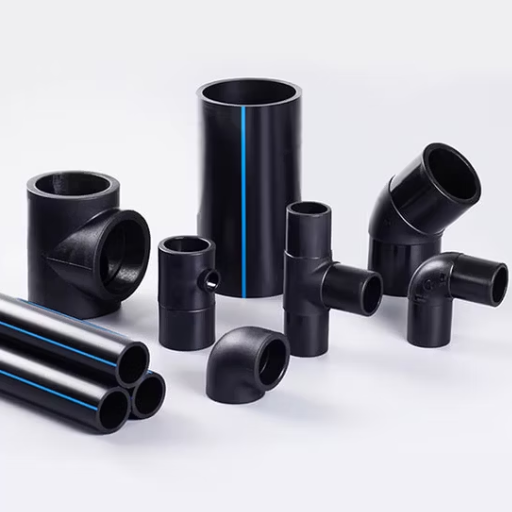
Choosing the right fusion machine
It is critical to choose the right fusion machine to guarantee accurate and long-lasting installation results. The choice is based on several important technical requirements: type of material, pipe diameter range, operational environment, and required joint quality.
- Material Compatibility: Check if the fusion machine is made to process the material of the pipes, including polyethylene (PE) and polypropylene (PP) or other thermoplastics. Machines set for the certain material will provide optimal heat and achieve the required joint integrity.
- Pipe Diameter Range: Different fusion machines are designed for different pipe sizes. It is important to choose the machine with the right diameter range for the intended applications. Using the wrong machine can lead to reliability and integrity issues in the joints.
- Pressure Rating: Determine the amount of hydraulic or manual pressure the machine can apply relative to the pipe wall thickness and fusion process. The pressure must not be misapplied during these processes as it can affect joints causing failure and deformations.
- Heating Element Precision: The machine must keep the surface temperature across the entire working area within a defined range, usually around 400°F–450°F (204°C–232°C) for PE pipes. Incomplete fusion or material degradation may result from temperature fluctuations.
- Environmental Factors: Machines operating in tough environments, whether subjected to low extreme temperatures or wet conditions, need weatherproofing or insulated components to ensure optimal performance.
Careful consideration of these factors will ensure the selected fusion machine conforms to the demanded operational and safety standards while providing optimal quality suited to intended use.
How to use a pipe cutter effectively
To operate a pipe cutter, I first check if I have the appropriate cutter for the pipe type and size. For example, rotary pipe cutters work best with metal pipes like steel and copper, while PVC pipe cutters work best with plastic piping. The pipe’s diameter also matters in terms of the cutter’s capacity, as most standard cutters range from 1/8 to 2 inches.
I start by making sure that the pipe is secured so it doesn’t move when I’m cutting it. Using a vise or clamp will keep the pipe steady. After that, I position the cutter’s blade or cutting wheel at the spot where the cut needs to be done and I set the tool’s clamp to the pipe just above snug. If the pipe or cutter are over tightened, it will cause damage to the tool.
For rotary-style cutters, I spin the tool around the pipe while I tighten incrementally at each rotation to create an even cut, 1/8 to 1/4 turn for a clean cut. For PVC or ratcheting cutters, gentle but steady force is applied to ensure the piece is cut without shattering.
At every stage, I look at the edge for signs of use since lack of sharpness affects accuracy. Proper alignment and equal distribution of force reduces the presence of burrs and jagged edges. I put a deburring tool to use after the cut is made to tidy up loose ends, ensuring the blade stays within the standards set.
What are the challenges and solutions in pipe connection?
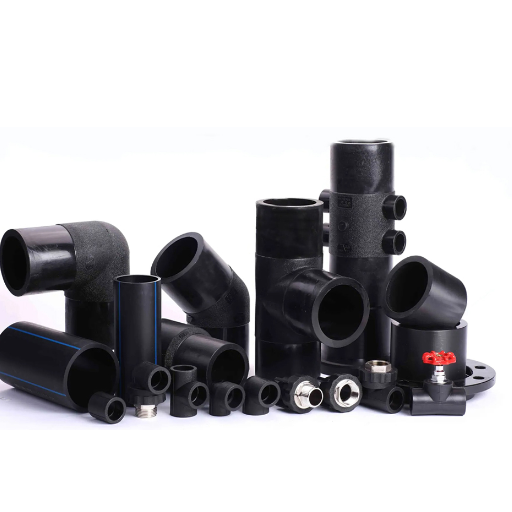
Common leak issues and how to prevent them
A leak is typically caused by a bad seal because of a defective or poorly fitted gasket, O-ring, or thread sealant.
Another common problem– is insufficient tightening of joints. Symmetrically tightening joints requires the same amount of torque being applied evenly in a radius around a center. Over-tightening it may break the threads or squeeze the gasketing parts, while insufficient tightening allows fluid leakage.
Installation methods that make use of poor alignment can also cause leaks due to uneven forces on the pipe connections. Realigning pipes to the flanges with a tolerance of 1 degree and checking flanges for parallelism are ways to reduce misalignment. Employing precision alignment tools can help correct misalignment caused by the operating tools.
This is even more important than systems that handle dangerously corrosive fluids. If no precautions are taking, corrosive materials will cut through steel structures in no time. Using steel will lead to leaking holes over time if no materials that guard against corrosion are used.
Lastly, it is important to note that loose connections in high temperature systems can occur due to thermal expansion. It is necessary to incorporate expansion joints or flexible couplings, and check thermal tolerances for materials; for example, austenitic steel grades maintain strength up to 1500 °F (815 °C) on the order of tens of seconds.
Controlling these factors with proper technical specifications and methodologies can drastically mitigate leak risk and ensure a dependable and safe piping system.
Adapting to different pipe materials and environments
Understanding how different materials interact with their surroundings is critical for adapting pipelines to other systems and environments. Corrosion, expansion, and pressure specific to the selected material are thoroughly analyzed. For example:
- Material Compatibility: Carbon or stainless steel pipes are commonly used in high-pressure and high-temperature environments. PVC and HDPE are suitable for low-pressure applications or where chemicals are present.
- Temperature Range: PVC performs well at temperatures up to 140°F, as going lower makes it brittle, whereas stainless steel is operational from -200°F to 1500°F.
- Corrosion Resistance: For strong corrosive settings, internally lined pipes or grade 316 stainless steel would be an ideal choice due to the abundant exposure to chemicals and saline.
- Environmental Considerations: Coatings, sheath, or cathodic protection may be required for underground piping systems to avoid corrosion due to soil. Non-metallic above-ground components require resistance to UV radiation.
Assessment of factors like pressure ratings, temperature, and expected environmental changes helps engineers validate material selection and maintain the pipeline system contour coherence with the operating conditions.
Reference sources
Frequently Asked Questions (FAQs)
Q: What are the common methods used to join HDPE pipes?
A: HDPE pipe joining methods include heat fusion, mechanical coupling, and the use of special fittings. These methods ensure secure and durable connections for a wide range of applications, from water supply to sewage systems.
Q: How does heat fusion work in joining polyethylene pipes?
A: Heat fusion involves heating the ends of the HDPE pipes to a melting point and then pressing them together to form a fusion joint. This method creates a strong, leak-proof connection, making it one of the most reliable techniques for joining HDPE pipes.
Q: What is a mechanical coupling, and when is it used?
A: A mechanical coupling is used to connect HDPE pipes without the need for heat or welding. It involves using fittings for HDPE pipes, such as an adapter, to secure the connection. Mechanical couplings are often used when permanent joints are not required or when quick installation is needed.
Q: Why are special fittings required for large-diameter HDPE pipes?
A: Large-diameter HDPE pipes often require special fittings to ensure a secure and effective connection. These fittings are designed to accommodate the larger pipe’s outside diameter and the specific requirements of the installation, such as pressure and environmental conditions.
Q: What factors should be considered when choosing HDPE pipe joining methods?
A: When selecting HDPE pipe joining methods, factors such as pipe size, application, and environmental conditions should be considered. Other factors include the need for flexibility, the presence of existing infrastructure, and the specific requirements of the project.
Q: Can PVC fittings be used with HDPE pipes?
A: While PVC fittings can sometimes be used to connect HDPE pipes, it is generally recommended to use fittings specifically designed for HDPE to ensure compatibility and a secure connection. HDPE fittings are specifically engineered to match the properties of HDPE pipes.
Q: What is the role of a welding machine in the heat fusion process?
A: A welding machine is used to heat the surfaces of the pipe ends during the heat fusion process. It ensures uniform heating and alignment, which are crucial for creating a strong and reliable fusion joint in HDPE pipe connections.
Q: How do the ends of the pipes affect the joining process?
A: The ends of the pipes play a critical role in the joining process. For a successful connection, the ends of the HDPE pipes must be clean, properly aligned, and free of any damage. This ensures a tight seal and a secure joint.
Q: What applications are HDPE pipes commonly used for?
A: HDPE pipes are used in a wide range of applications, including water supply, sewage systems, and industrial piping. Their flexibility, durability, and resistance to corrosion make them suitable for various environments and purposes.
Q: How important is the surface of the pipe in HDPE connections?
A: The surface of the pipe is crucial for achieving a strong connection, especially in heat fusion methods. The pipe surface must be clean and free of contaminants to ensure proper melting and adhesion during the fusion process.



